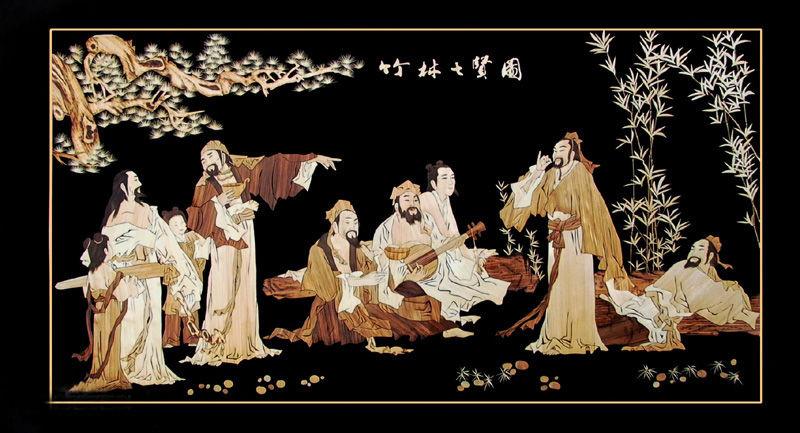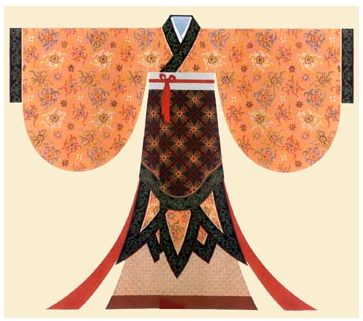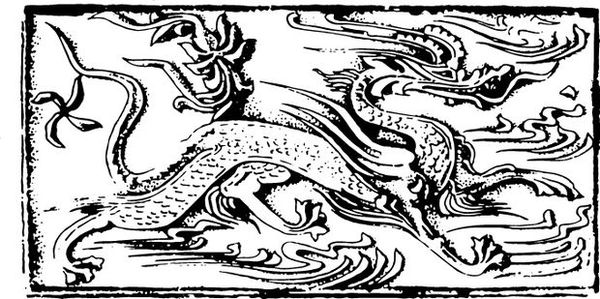Colorful and Diverse Culture in the Wei, Jin and Southern and Northern Dynasties
6 min readThe extension and development of Chinese culture during the period were also expressed in science, technology and culture. Agronomy, medicine, mathematics, geology, calligraphy, painting and sculpture surpassed the Qin and Han dynasties and reached a new peak.
The period saw the invention of the perfusing steel method that was used to produce steel by combining pig iron and wrought iron, the creation of a rotating water cart,a kind of high-efficient tool for irrigation, as well as the cultivation of a superior silkworm breed that could produce pods eight times a year. In addition, oil and natural gas were also used for lighting or even fire attacking.

The book Essential Techniques for the Peasantry, written by Jia Sixie in the Wei State,systematically summarized the experiences in farming,stock-raising,fishing and other production activities of the people in the middle and lower reaches of the Yellow River,as well as the ways to process and store food.It is the first available complete agricultural book in China and the first agricultural encyclopedia in the world as well.
The Commentary on the Waterways Classic,written by the geographer Li Daoyuan,is a book of notes to previous works.With more than 300,000 words,it goes into details about 1,250 rivers as well as the mountains,landscapes,evolution of counties,local products,customs,history and legendaries in areas along the waterways.The Commentary on the Waterways Classic is more than an excellent comprehensive geographical work;it is of great significance in both history and literature.

Zu Chongzhi,a mathematician in the Southern Dynasty,concluded that the value of pi falls between 3.1415926 to 3.1415927,an achievement 1,000 years earlier than that worked out in the west.He formulated The Daming Calendar,concluding a yearactually includes 365.24281481 days,with an error of no more than 50 seconds.Zu Chongzhi was also good at making mechanical instruments,successfully duplicating the compass cart,even though its creation techniques had been lost for generations.Zu also created the”thousand-li ship”that could travel hundreds of 1i per day and water mills.To commemorate his great contributions to world science and culture,the International Astronomical Union named a ring mountain on the moon as the“Mountain of Zu Chongzhi”in the 1960s.
The collapse of the Eastern Han and the ensuing severe turbulences destroyed the overwhelming supremacy of Confucianism and led to a flourishing of legalism and metaphysics. The local Taoism and Buddhism introduced between the Han dynasties were particularly prosperous, posing a challenge to the Confucianism that they believed was all about ridiculous words and unchanging doctrines.
The metaphysics that emerged between Wei and Jin dynasties respected Lao Tze and Zhuang Tzu,and advocated“void is the nature of everything”and“acting in accordance with the natural laws.”The representatives like Ji Kang and Ruan Ji brazenly declared that”he despises the King Tangwang of the Shang Dynasty and King Wuwang of the Zhou Dynasty,and belittles Zhougong and Confucius,”speaking and behaving beyond established ritual and legal norms.Metaphysics grew as the dominant school of thought at that time,driving forward the development of philosophical thinking and liberation of individuals.But it later developed into empty talks that didn’t make sense.

Buddhism was introduced into the central plains from ancient India during theWestern and Eastern Han dynasties and prospered in the Wei and Jin dynasties. Buddhism emphasizes the karma and samsara,telling people they could attain happiness in their afterlife so long as they tolerate pains and earnestly practice Buddhist rules.The doctrines allowed the maintainance of the hierarchical orders,offered converts spiritual support and was particularly attractive to the poor whowere struggling in the turbulent world.The Southern and Northern dynasties saw the peak of Buddhism.As the poems of Du Fu,a poet of the Tang Dynasty,described,“Many of the 480 temples in the Southern and Northern dynasties are shrouded ir mist and drizzle.”In the Northern Dynasties,the number of Buddhist temples increased to more than 30,000,and monks and nuns to three million.The spread of Buddhism injected fresh elements and had a huge impact on traditional Chinese culture in such aspects as ideology,culture,art and literature.
Taoism,established at the end of the Eastern Han Dynasty,is a local religion of China combining Taoist thought and supernatural art.It was reconstructed by GeHong in the Eastern Jin Dynasty and enhanced to an official position.It advocated harmony between heaven and human beings,attainment of the highest state of spiritual enlightenment and becoming immortal with cultivation and immortality pill making according to the Taoist doctrine.Tao Hongjing of the Southern Dynasties further established a system of immortals from Jade Emperor to City God and Kitchen God,having far-reaching influence upon ancient Chinese people.
The successive rise of metaphysics,Buddhism and Taoism greatly attacked the hackneyed Confucianism,creating an open,diverse and lively atmosphere in theideological world and leading to competition among Confucianism,Buddhism and Taoism.
The Wei,Jin and Southern and Northern dynasties saw the collapse of ritual norms and social turbulence.That gave rise to calligraphy as an ideal form for scholars to express their thoughts and pursuits.Chinese character writing gradually evolved into a self-conscious calligraphic art.Wang Xizhi,who was known as theSaint of Calligraphers in the Eastern Jin Dynasty,had exquisite style and hard strokes like floating clouds and flowing water.His Preface to the Orchid Pavilion represents the spirit of calligraphic art in the Jin Dynasty and is called the “best-running script works.’
The Wei and Jin dynasties were the first important developmental period for traditional Chinese painting, with the creation of paintings with marked individuality by scholars. Scholar-bureaucrats of the time admired inane disputes and stressed the spirit while evaluating a person. Gu Kaizhi,a famous artist in the Eastern Jin Dynasty, was a representative of the spirit-oriented style. He insisted that the “spirit of a figure shall be expressed through outer appearances”and especially highlighted the traits of figures. While painting a Buddhist image for the Waguan Temple in Jiankang, Gu didn’t draw the eyes until the rest of the painting was finished, immediately making the image extremely vivid and winning praise and adoration from all the witnesses who later gave alms to the temple in succession.
Frequent exchanges with the ethnic groups in the Western regions and foreign nations helped enrich the art forms like music, dance and grotto sculptures in the Wei, Jin and Southern and Northern dynasties. The grotto sculptures that combine sculpture and painting art particularly reflect the highest achievements of thetime. Yungang Grottoes in Pingcheng (present-day Datong, Shanxi), initiated in the early Northern Wei Dynasty, boasts spectacular scale with more than 50,000 Buddhist statues and Flying Apsaras. The largest Buddhist statue among them is 13.7 m high and was carved with superb craftsmanship. Affected by the Indian Buddhist art styles, the Buddhist statues have high noses, deep eyes and serious facial expressions, showing traits typical of the Hu people in the Western Regions. Longmen Grottoes in Luoyang, Henan, were created after Emperor Wendi of the Northern Wei Dynasty moved the capital there, with one-third of the thousands of grottoes andhabitats excavated during the Northern Wei Dynasty. The Buddhist statues, seriousand kindly, are dressed in exquisitely carved clothes with smooth veins, and show cultural features of the central plains.
The thoughts and culture of the Wei, Jin and Southern and Northern dynasties hadn’t been interrupted either during the Three Kingdoms Period or in the confrontation between the South and North dynasties. On the contrary, they thrived because of the awakening of scholars and showed a pattern featuring the dominance of the culture of the central plains and a merging of diverse elements, leaving unique marks on ancient Chinese history.








